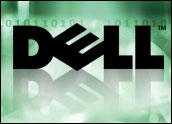
In the years since thin client computing arrived on the IT scene, it has been pronounced dead, only to arise again more often than Jason in the “Friday the 13th” film franchise. That’s not due to any quality of its underlying architecture. In fact, thin client engineering is often elegant in the extreme and makes clever use of au courant mainstream technologies. But the two main benefits of thin clients tend to be counterbalanced by essential challenges: Cost — The long-term costs associated with thin clients, especially operational and facilities expenditures (OPEX), are extremely attractive. But that is typically offset both by thin client infrastructure acquisition costs (CAPEX) and by the radical erosion of traditional desktop prices over time. When Windows NT-based thin clients made their commercial appearance in 1995, individual PCs cost about US$2,000 each. Today, the price of a standard PC is below $500 and still falling, placing steady pressure on thin client CAPEX and margins.
Performance — A primary appeal of thin clients is the fact that the vast majority business desktop PCs are wildly overpowered given the work employees typically perform. That makes the concept of thin or zero clients that support specific, necessary applications/processes extremely attractive. However, thin client performance and end user satisfaction can sometimes be negatively impacted by often difficult-to-control issues, including network traffic/latency and the distance between desktops and data centers.
Dell’s Wyse Move
These issues are anything but cast in stone. For example, thin clients are typically longer-lived than desktop PCs, which can mute or eliminate the three-to-five-year PC refresh cycle that saddles most companies. That, plus thin clients’ significantly better power efficiency (a Wyse thin client draws just 6W of electricity compared to a standard PC’s 150-200W, saving owners up to $60 per year per machine) makes the OPEX value proposition even more attractive.
In addition, numerous solutions exist for overcoming thin client performance issues, including Wyse TCX, which provides a richer end user experience by intelligently streamlining the delivery of multimedia content to the local client.
What does any of this have to do with Dell’s recently proposed acquisition of Wyse? Three things: First, adding Wyse will automatically, significantly deepen Dell’s existing thin client business in terms of offerings, revenues, units shipped and IP. (Along with selling more than 1 million units last year, Wyse owns 180-plus existing/pending patents).
It’s also likely that Wyse customers will become prospects for other Dell sales initiatives. After all, thin clients are essentially a data center play, which matches well with Dell’s broader IT infrastructure solutions/services strategy.
Lastly and most importantly is the way the deal plays to the growing effect of virtualization and cloud computing on thin-client markets. That is certainly the case in tangibly related offerings, including the Microsoft, Citrix and VMware (VDI) solutions called out in the Wyse acquisition announcement. But it also positions Dell to pursue future thin client opportunities.
A New PC Age
That could certainly take the form of service providers hosting enterprise desktops via cloud data centers. But cloud-based/managed services provide workable solutions for numerous challenges arising from the consumerization of IT.
It isn’t that we’re entering the “Post-PC era” — a phrase that usually suggests flabby thinking or the guiding hands of a non-PC product marketing professional. Instead, we’ve already arrived in the age of heterogeneous, ubiquitous personal computing.
Dedicated Apple customers aside, the vast majority of computing consumers use multiple devices and platforms to enable/support a widening range of activities and processes enriched by digital intelligence. Whether they realize it or not, most people already use cloud infrastructures to access the Web, communicate, transact business, and store documents and files.
The same goes for any company that allows/encourages employees to “Bring Your Own Device” (BYOD) to work. In the scenarios Dell imagines, cloud-based, powerful thin client services could provide a seamless means for organizations to intelligently, uniformly and securely manage employees’ desktop, mobile and other computing channels.
If Dell is correct, adding Wyse Technology’s breadth of products and depth of experience will be invaluable as the company, its customers and partners, and the greater market continue the inevitable journey to the cloud.





















































Social Media
See all Social Media